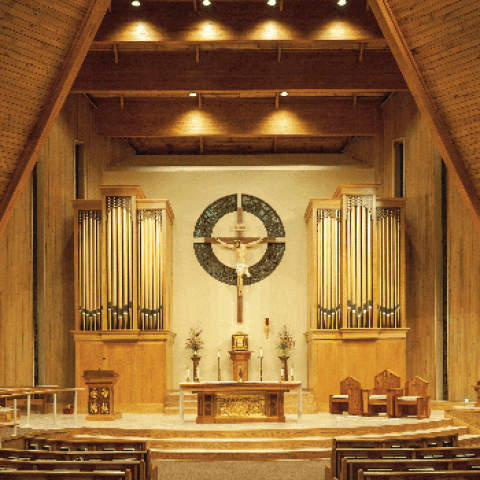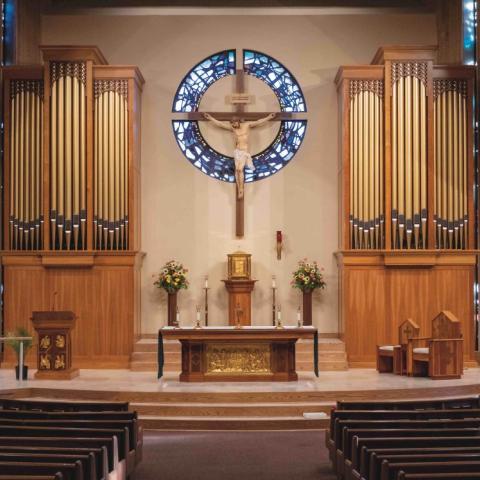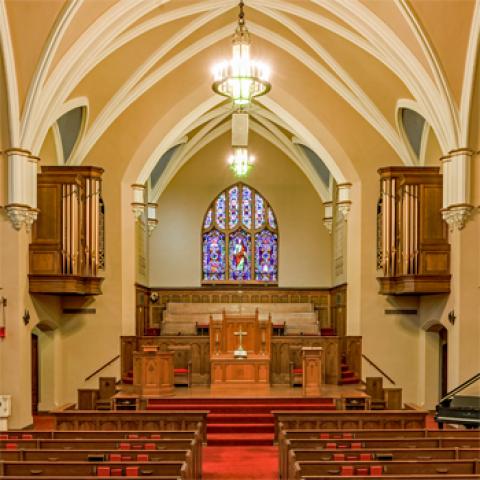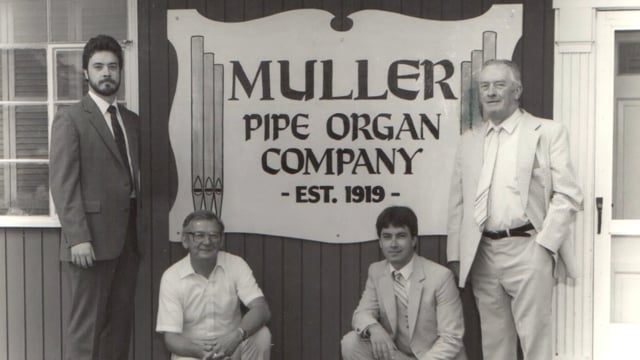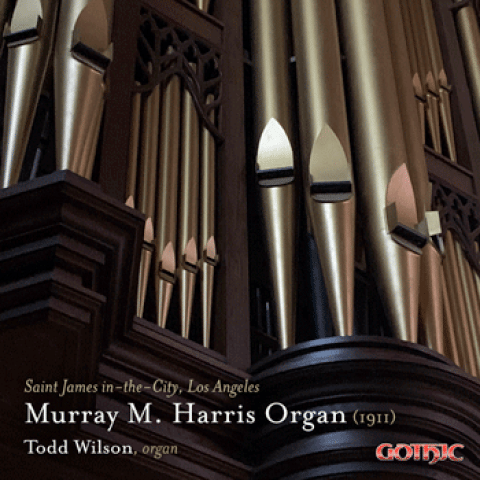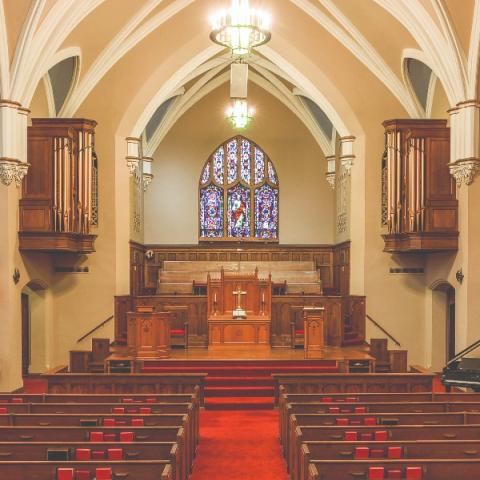Trinity Episcopal Cathedral of Cleveland, Ohio once housed a magnificent Skinner pipe organ dating from 1906. The Skinner instrument fell into disuse and was eventually removed after a new Flentrop organ was installed in the west end nave in 1977. When world-renowned organist Todd Wilson joined the Cathedral staff, he dreamed of the possibilities for an instrument in the original organ chambers at the front of the Cathedral and a plan was set in motion.
First, Aeolian-Skinner Opus 1188 was acquired for the core of a new instrument. Then, select ranks of Skinner Opus 245 were salvaged from the former Emmanuel Episcopal Church in Cleveland and incorporated into the plan for the instrument. This material provided a fine foundation on which to build the eventual new instrument.
This high-profile project was entrusted to Muller Pipe Organ Company of Croton, Ohio. Now in its 103rd year, Muller is known for its work with historic electro-pneumatic instruments. Todd Wilson shares “I saw the present Muller Company (two active generations) work miracles in reconstructing Skinner Opus 647 . . . and was confident that they would be able to provide similar results at Trinity Cathedral . . . That they have done.”
The new Muller organ at Saint Joan of Arc Catholic Church, Toledo, Ohio, is featured on the cover of the February issue of The Diapason.
https://www.thediapason.com/content/cover-feature-muller-pipe-organ-co-st-joan-arc-toledo
For information: https://www.mullerpipeorgan.com/

